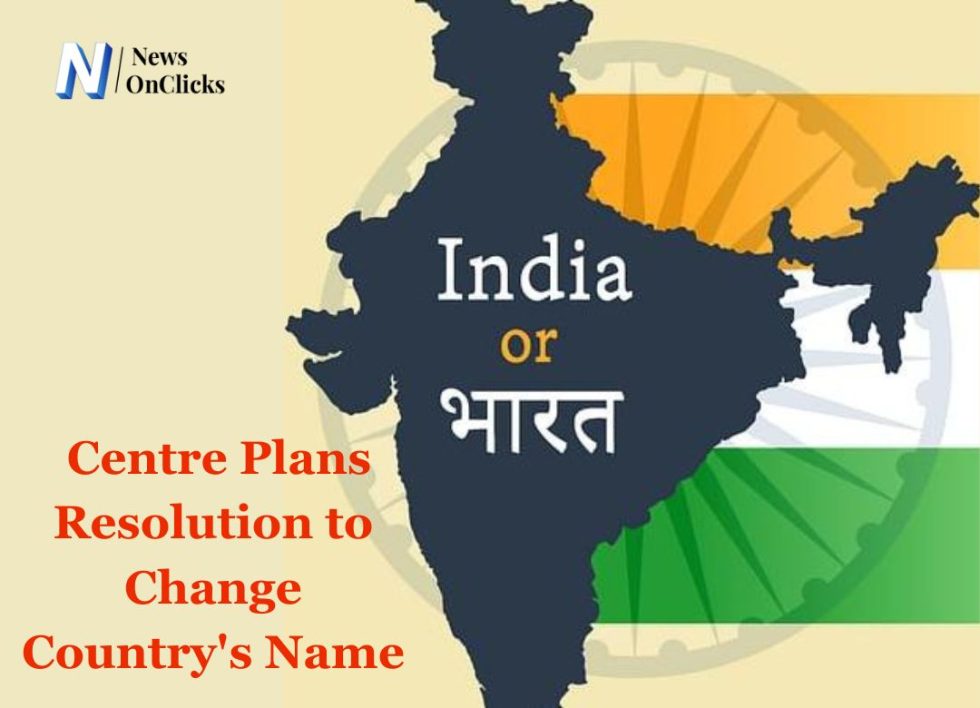
As a citizen of this great nation, a historic change may soon be upon you. The central government is planning to introduce a resolution to change the official name of India to ‘Bharat.’ For many, ‘Bharat’ holds greater historical and cultural significance as it has been the popular name for the region in native languages for centuries. The proposed name change aims to recognize the primacy of native identities and languages. While India became the official English name used internationally, Bharat prevailed as the name in the Constitution and other official use.
If passed, the resolution would formally change the name used in all central government correspondence and communication to Bharat, though India may still be used in an international context. A name change of this significance raises many questions about national identity and global perceptions. As the world’s largest democracy, a rose by any other name would smell as sweet, but what’s in a name? For a nation’s people, quite a lot. The coming debate around this resolution promises to be a pivotal moment.
History Behind the Name “Bharat”
The name ‘Bharat’ has a long and rich history, dating back to ancient India. According to Hindu scriptures, Bharat was the son of King Dushyant and Shakuntala, and the country was named ‘Bharat Varsha’ after him.
In the 7th century BC, the Vedic Sanskrit text Rigveda mentions ‘Bharat’ as a tribe and a region in India. The Persian form ‘Bharata’ appears in the Behistun inscription of Darius the Great and ‘Bharata’ was mentioned as a kingdom in the ancient epic Mahabharata.
The Constitution of India, adopted in 1950, mentions ‘India, that is Bharat’ in Article 1, accepting both names as equally official. However, ‘India’ continued to be used commonly by politicians and officials. In recent years, some political leaders and organizations have advocated using ‘Bharat’ more prominently to reflect India’s cultural heritage.
If the central government passes a resolution to change the country’s name to ‘Bharat,’ it would align with the vision of reviving India’s pre-colonial cultural legacy. The move could also bolster national pride in India’s long history and civilization. However, critics argue that ‘India’ is the established name globally and changing it may lead to confusion in international affairs and reduce recognition of Brand India on a global platform.
A name change would require amending the Constitution and updating all official documentation and communication. While ‘Bharat’ represents India’s cultural roots, ‘India’ is the nation’s global identity. Balancing these perspectives, using ‘India (Bharat)’ together, as in the Constitution, may be the most pragmatic approach. In the end, the will of the people and parliament will guide this important decision.
Why the Government Wants to Rename India as Bharat
The Government of India intends to introduce a resolution to change the country’s name from ‘India’ to ‘Bharat’ to reflect its ancient history and cultural heritage.
India was referred to as ‘Bharat’ in many ancient Hindu scriptures, including the Vedas, Puranas, Ramayana, and Mahabharata. The word ‘Bharat’ is derived from the name of a king in the Rigveda, thus representing India’s long and storied past. Using ‘Bharat’ as the official name would help preserve ancient traditions and strengthen national identity.
Promoting Cultural Pride
Renaming India as Bharat would instil a sense of cultural pride in citizens by honouring the country’s roots. It signifies the shared history, values and unity of the people. Calling the nation ‘Bharat’ in speeches and official communications can kindle patriotism and bind the population together.
Global Recognition
The name ‘Bharat’ is already recognized internationally and used by other countries to refer to India in their respective languages. It is a step towards establishing a unique global identity and brand for the country that is distinct from the colonial name ‘India.’ Using the indigenous name ‘Bharat’ on the global stage can enhance the nation’s prestige and influence on the world map.
While a resolution to change the name would require considerable discussion and consensus building, renaming India as Bharat can be an important symbolic move to celebrate the nation’s cultural heritage and strengthen national identity. The government believes ‘Bharat’ is a more appropriate name that evokes a sense of pride in the country’s long and illustrious history.
Improving global recognition
The name Bharat is already widely recognized abroad and changing the country’s official name may raise global familiarity with India’s heritage and brand. Several countries, including Russia, China and Malaysia, already refer to India as Bharat in their native languages. Adopting Bharat as the official name would align India’s global image with how much of the world already knows the country.
While renaming India to Bharat could strengthen national identity and cultural heritage, it may also create some challenges. There are administrative and logistical difficulties involved in changing a country’s name. The name ‘India’ is also deeply familiar to citizens and the international community. However, with proper planning and education, transitioning to the name Bharat could be an opportunity for India to reclaim its cultural heritage on the global stage.
Counter Arguments Against the Proposed Name Change
There are some counter arguments against changing India’s name to Bharat that are worth considering:
Cost and Logistical Challenges
Renaming the country would require changing all official documents, signs, and materials to use ‘Bharat’ instead of ‘India’. This would be an immense logistical challenge and cost the government a significant amount of money and resources. Everything from passports and stationery to government websites and signs would need to be updated.
International Recognition
The name ‘India’ is well-established internationally and recognized by most other countries and organizations. Changing the country’s name could create confusion on the global stage and require a large public education campaign to spread awareness of the new name. India has built up its brand recognition as a major economic and geopolitical power under its current name.
Cultural Acceptance
While ‘Bharat’ has historical and cultural significance, ‘India’ is the name most citizens strongly identify with. For many Indians, ‘India’ invokes a sense of national pride and shared identity. Although ‘Bharat’ is mentioned in the Constitution, ‘India’ remains the popular and commonly used name. Changing such an integral part of the nation’s identity may not resonate with much of the population.
Complexity
India is an immensely diverse country with a mix of ethnic groups, cultures, languages and religions. Choosing one name over another could be seen to favour some groups over others. ‘India’ is a neutral, all-encompassing term for the country, whereas ‘Bharat’ has Hindu historical origins, which could alienate some minority groups. The complexity of India’s diversity may be better reflected in a name that represents inclusiveness.
In summary, while the intention behind the name change is to honour India’s cultural heritage, there are several counter arguments against making ‘Bharat’ the country’s official name. The government must weigh the costs and challenges of such a significant change against any benefits before proceeding with a resolution.
What Happens Next – The Legislative Process for the Name Change
If approved, the resolution to change India’s name to Bharat will follow the standard legislative process.
Introduction in Parliament
The ruling party will introduce the resolution in either house of Parliament – the Lok Sabha (lower house) or Rajya Sabha (upper house). It needs to be passed in both houses to become law.
The resolution will be tabled for debate, followed by voting. If passed by a simple majority, it will be sent to the other house for approval.
Once passed in both houses, the resolution is sent to the President for assent, after which it becomes law.
Timeframe for Approval
The entire process usually takes a few months to complete, depending on the legislative agenda and session schedules.
The resolution must be passed in the same session of Parliament, otherwise it lapses. A new resolution will have to be introduced again.
The President has the power to return the resolution for reconsideration to Parliament. If passed again, the President must give assent.
There are provisions for joint sessions of Parliament in case of disagreement between the two houses. A joint session aims to resolve differences and approve legislation.
Implementation of the Change
After receiving Presidential assent, the central government will determine the schedule and plan for implementing the name change.
All official stationery, currency, stamps, documents, signboards, etc. displaying “India” will have to be replaced with “Bharat”.
The change will also reflect in all digital properties like government websites, mobile apps, online forms, etc.
A public awareness campaign may be launched to spread awareness about the name change among citizens.
The name change of a country is a momentous event that requires meticulous planning and execution. If the resolution is passed, the central government will have its work cut out to overhaul all references of India and transition to using Bharat. Overall, it will be a long process that may take several months to fully implement.
Conclusion
As the central government proposes this resolution to officially change India’s name to Bharat, you have the opportunity to reflect on what this means for the country and its people. While some may see it as a symbolic move to reconnect with ancient cultural roots, for others it represents an imposition of a narrow vision of identity. Whatever your view, it’s clear that as India continues its trajectory as a rising global power, debates around national identity will shape its future course. Though names and labels are fluid, the spirit of diversity, democracy and progress that has defined this nation since Independence remains its guiding force. As the world’s largest democracy, India in any form has a significant role to play on the global stage in years to come.









